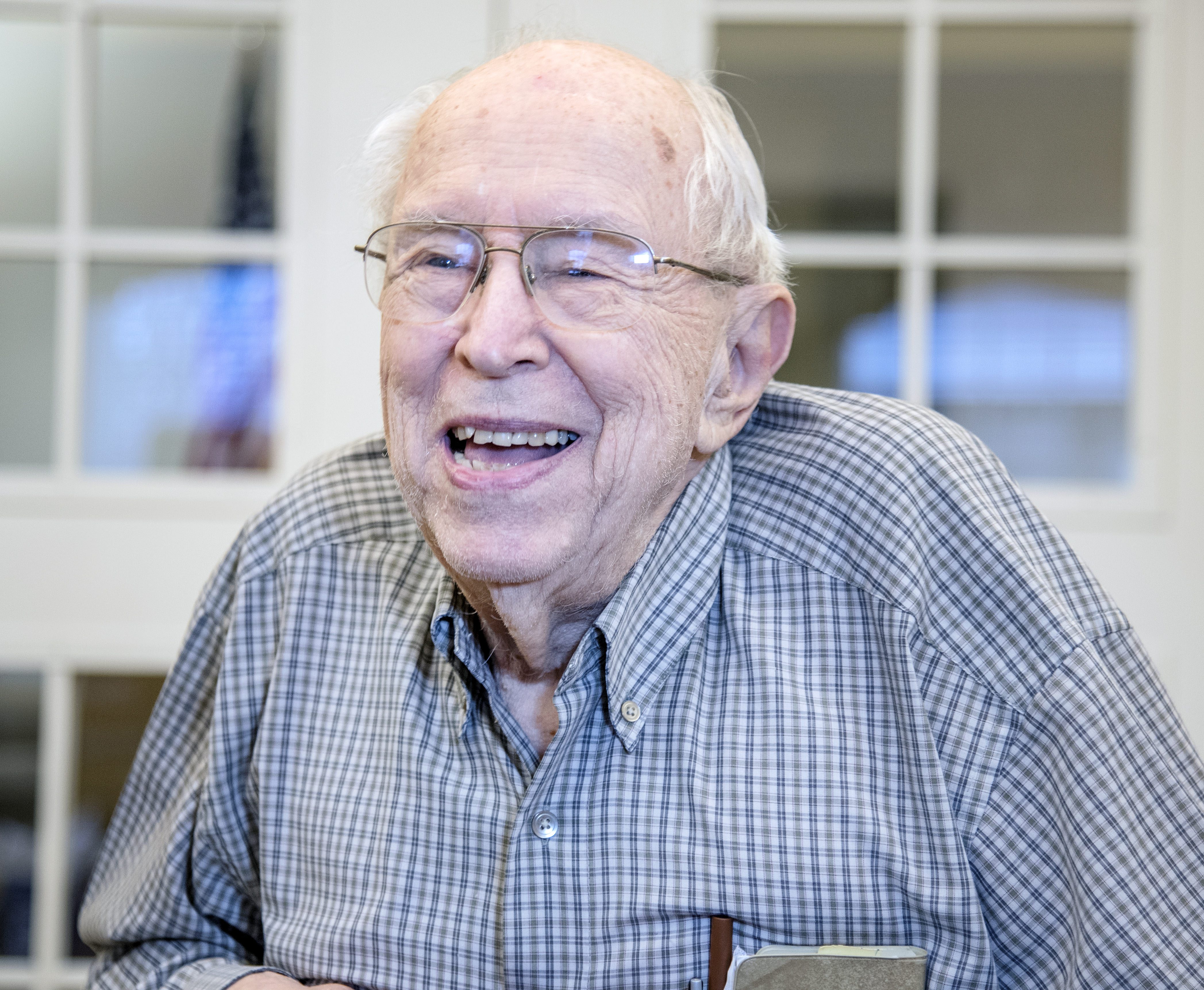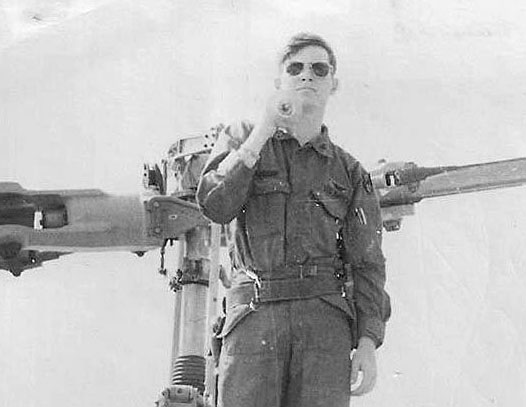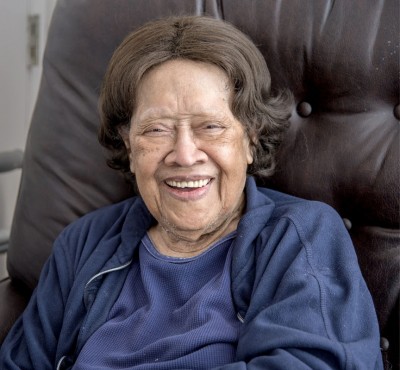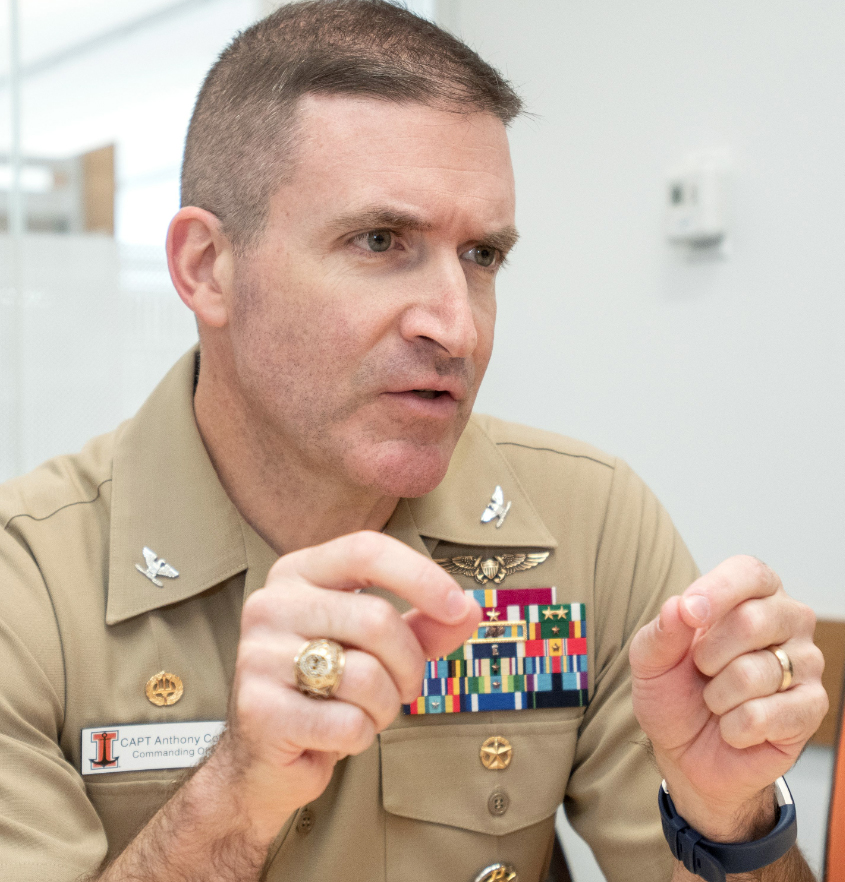Bob Bokenkamp
By Paul Wood

Photo By Rick Danzl/The News-Gazette
SAVOY — In taking several islands in the South Pacific, Bob Bokenkamp, a retired associate dean of students, said American troops got a great assist.
“The Australian and New Zealand troops helped us capture some of those islands,” he said.
“They were good fighters. They’d already had a lot of experience fighting in the South Pacific” in World War II before the U.S. entered the war in 1941.
A retired University of Illinois engineering administrator, Bokenkamp, 96, grew up all over the country.
“We lived wherever there are railroads; my father was a railroad man,” he explained.
Bokenkamp had just graduated from Eastern Illinois University (then Eastern Illinois State Normal School) in 1943 when he enlisted in the Navy.
Part of the Navy’s attraction was it wasn’t the Army, where he could be sent in the land invasion of Europe.
“He didn’t want to go to Germany because he had relatives there,” said his daughter, Jodie Thies, who helped out recounting Bokenkamp’s story where her father’s memory was hazy, something that only began recently.
He was the oldest of five boys, another of whom also joined the Navy.
As a midshipman, Bokenkamp was sent for additional training at Columbia University in New York, and then sent to the South Pacific, where Allied Forces were gradually taking back islands that the Japanese had captured.
He visited New Guinea as an ensign, and contributed to the capture of several other islands, sometimes serving on a PT boat, as did future President John F. Kennedy.
Bokenkamp’s job was to gain intelligence about islands held by the Japanese.
Bokenkamp saw the results of Allied successes as forces, both air and sea, moved toward a large Japanese base on Rabaul, Papua New Guinea.
On one island, nobody in Bokenkamp’s group knew which side of the road to drive on, using a “watch out! We’re coming” technique.
One invasion took back the island group of New Hebrides, which now is the nation of Vanuatu.
“They’d lose an island, and we’d build a new base to move on to the next,” Bokenkamp said.
The ensign was one of the officers overseeing bases there for future attacks, coordinating with New Zealand forces in “Operation Squarepeg,” 1944’s Battle of the Green Islands.
Allied forces captured several small atolls in the chain without heavy losses.
The Japanese were clearly in retreat as the war progressed, and Bokenkamp saw the horrors of war, including a large number of Japanese who jump off a cliff and drowned.
“They must have thought there was an island close by,” he remembered.
He also served in jungle operations, “but I was never wounded.”
After a long delay before his trip back to the U.S., Bokenkamp taught in secondary schools, joining the faculty at Champaign High School (now Central).
He earned a master’s degree in education in 1950, a springboard to joining the administration at the Urbana campus.
He and his wife, Alice, raised four children.
Do you know a veteran who could share a story about military service? Contact Paul Wood at pwood@news-gazette.com.
Read more stories from local veterans:
 Larry Ohlsson
CHAMPAIGN — To rescue soldiers on the ground, Larry Ohlsson often flew his Huey helicopter through heavy fire in Vietnam …
Larry Ohlsson
CHAMPAIGN — To rescue soldiers on the ground, Larry Ohlsson often flew his Huey helicopter through heavy fire in Vietnam …
 Anna Wall Scott
CHAMPAIGN — Former American Legion Post 559 Commander Anna Wall Scott — a World War II veteran and one of the first Wome …
Anna Wall Scott
CHAMPAIGN — Former American Legion Post 559 Commander Anna Wall Scott — a World War II veteran and one of the first Wome …
 Anthony Corapi
CHAMPAIGN — Flying around the world as a Navy navigator, Capt. Anthony Corapi picked up technical and leadership skills. …
Anthony Corapi
CHAMPAIGN — Flying around the world as a Navy navigator, Capt. Anthony Corapi picked up technical and leadership skills. …